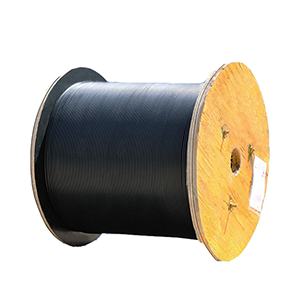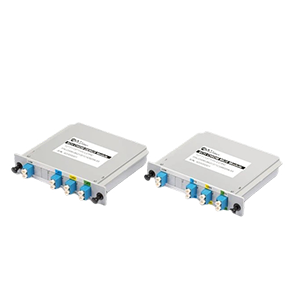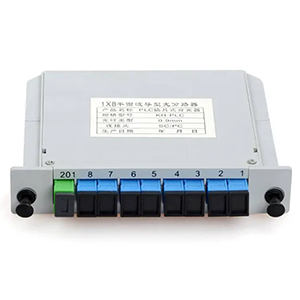Ports in network devices play an important role in achieving communication between devices. This article will focus on the concept of wide area network (WAN) ports. We will first explain what network device ports are and explain the functions of different types of ports.
Next, we will describe the characteristics of WAN ports and explain their role in network devices. Then, we will introduce the basic working principle of WAN ports and explain how they achieve WAN communication. Finally, we will explain the common configuration items of WAN ports and introduce typical management methods.
Overview of Network Device Ports
Network device ports are interfaces used to connect devices and networks. Common types include Ethernet ports (for wired connections), WAN ports (connecting to external networks), and USB ports (expansion devices), which ensure data transmission, device connection, and network function.
What is a network device port:
Network device ports refer to physical interfaces provided on devices, which are used to connect other network devices or media to achieve communication between devices. The main features include:
(1) Providing an interface for connecting network devices:
- A network device port is a physical interface that connects a device to a network.
- Different types of ports support connecting different network media or devices.
(2) Realizing communication between devices:
- Through the connection of network device ports, devices can exchange data and information with each other.
- A port is a physical entrance for network devices to participate in communication.
Functions of different types of ports:
Network devices usually have the following common port types:
(1) LAN port:
- LAN ports are used to connect devices within a local area network (LAN), such as computers, switches, etc.
- Common LAN port types include Ethernet port (RJ-45), fiber port, etc.
(2) WAN port:
- WAN port is used to connect to the transmission link of the wide area network (WAN), such as dedicated line, fiber optic, etc.
- It is used to connect network devices (such as routers) to the external WAN network.
(3) Management port:
- The management port provides an interface for configuring and managing network devices, usually a serial port or Ethernet port.
- Through the management port, network administrators can access and control the device remotely or locally.
In addition, network devices may also have other types of ports such as power ports and console ports. These ports have their own functions and together constitute the physical connection capabilities of network devices.
Definition of WAN port
WAN port is an interface on a network device that is used to connect to a wide area network or Internet service provider. It connects the internal network to the external network, handles the transmission of data traffic, and realizes cross-regional communication and remote access.
Features of WAN port:
WAN (Wide Area Network) port is a special port on a network device with the following features:
(1) Used to connect to a wide area network or the Internet:
- WAN port provides a physical interface for connecting network devices to a wide area network or the Internet.
- It can connect to WAN transmission media such as dedicated lines, optical fibers, and telephone lines.
(2) Realize communication between network devices and wide area networks:
- Through the WAN port, network devices can exchange data with remote wide area network devices.
- This enables interconnection within the WAN.
The role of WAN ports in network devices:
WAN ports play an important role in different types of network devices:
(1) WAN port of a router:
- The WAN port of a router is used to connect to a WAN or Internet link.
- It connects the router to the public network to achieve data forwarding within the WAN.
(2) WAN port of a gateway:
- Gateway devices (such as firewalls, VPN devices, etc.) usually have WAN ports.
- These WAN ports are used to connect internal networks to external WANs or the Internet.
(3) Providing WAN access:
- Through the WAN port, network devices can access the WAN and obtain public network resources and services.
- This provides users and applications with connectivity to the WAN.
In short, the WAN port is the key physical interface used by network devices for WAN connection, and plays an important role in achieving WAN interconnection, data forwarding, and public network access.
How WAN ports work
The WAN port receives and sends data traffic by connecting network devices to external networks or Internet service providers. It accesses the WAN and forwards data packets from the internal network to the external network to achieve remote communication and Internet access.
Basic working process of WAN port:
The basic working process of WAN port in network equipment is as follows:
(1) Receive data packets from WAN:
- The WAN port is responsible for receiving data packets transmitted from WAN (such as Internet).
- It forwards these data packets to the routing forwarding module inside the device for processing.
(2) Forward data according to the routing table:
- The routing module of the device will query the internal routing table and determine the forwarding direction of the data packet according to the destination address.
- If the destination is in the local network, the data packet will be forwarded from the LAN port; if it is on the WAN, it will be forwarded from the WAN port.
How WAN ports achieve WAN communication:
The main mechanisms for WAN ports to achieve WAN communication include:
(1) Addressing using public IP addresses:
- WAN ports use public IP addresses to identify the location of devices on the WAN.
- This ensures that data packets can be correctly addressed and routed to the target device within the WAN.
(2) Accessing the WAN via a dedicated line or the Internet:
- WAN ports generally access the WAN via a dedicated line (such as a leased line from a telecommunications company) or the Internet.
- Dedicated lines provide stable and reliable connections, while Internet connections are flexible but of relatively poor quality.
Through the above workflow and addressing mechanism, the WAN port can effectively connect network devices to the WAN and realize cross-segment communication between devices. This is the key technical foundation for WAN interconnection.
Configuration and management of WAN ports
Configuration and management of WAN ports include setting IP addresses (static or dynamic), configuring subnet masks, gateways, and DNS servers. Management tasks also involve monitoring traffic, adjusting bandwidth, and implementing security policies to ensure stable external network connections and optimize network performance.
Common configuration items of WAN port:
Configuring WAN port requires setting the following common parameters:
(1) Physical interface parameters:
- Interface type (Ethernet, fiber, etc.)
- Link rate and duplex mode
- Physical layer protocol configuration
(2) Logical configuration:
- IP address and subnet mask
- Default gateway settings
- DHCP or static IP allocation
(3) Security policy:
- Firewall access control rules
- VPN tunnel configuration
- Intrusion detection/prevention settings
Reasonable configuration of these parameters ensures that the WAN port can stably and securely connect to the WAN.
Typical management methods of WAN ports:
Network administrators usually use the following two main methods to manage WAN ports:
(1) Remote management through network management software:
- Remotely access and configure WAN ports using a central network management system (such as SNMP management tools).
- This method can centrally manage WAN ports distributed in different locations.
(2) Configuration using the command line interface:
- Directly log in to the command line interface (such as CLI) of the device and manually enter configuration commands to manage the WAN port.
- This method is highly flexible and suitable for customized configuration of specific WAN ports.
No matter which management method is adopted, network administrators need to have good WAN port configuration and troubleshooting capabilities to ensure the stable operation of the wide area network.
Summary
Reasonable configuration and management of WAN ports is the key to building a stable and efficient network. Our company has long focused on the research and development and application of network solutions and has rich practical experience. We provide powerful network equipment that is widely used in various network scenarios such as enterprises, operators, and large institutions.
Our network equipment adopts industry-leading WAN port technology, and has achieved excellent levels in interface performance, configuration flexibility, and remote management. At the same time, our team of engineers will provide you with professional demand analysis and solution design services to ensure that the deployed WAN port solution can meet your actual needs to the greatest extent. Contact us now to learn more.
WAN Port FAQ
A WAN port is a network port on a router or other networking device that connects to an external wide area network, such as the internet. It provides the interface for linking the local network to the broader internet or another wide-area network.
WAN Port: Connects the router to an external network (like the internet) and typically interfaces with a modem or ISP.
LAN Port: Connects local devices within a network, such as computers, printers, and switches, for internal communication.
The WAN port is necessary to connect your router to the internet or another external network. It allows your local network to access online resources and services by providing a gateway to the outside network.
To connect a WAN port, plug an Ethernet cable from the WAN port on your router to the modem or other external network device provided by your ISP. This connection establishes the link between your local network and the internet.
No, LAN ports and WAN ports serve different purposes and are not interchangeable. WAN ports are specifically designed for external network connections, while LAN ports are for internal network devices.
If your WAN port is not working, check the physical connections (ensure the Ethernet cable is securely plugged in), restart both the router and modem, verify that the modem is functioning properly, and check your router’s configuration settings. Contact your ISP if issues persist.
Most consumer routers have one WAN port, but some advanced or business-class routers may have multiple WAN ports to support redundancy and load balancing.
Yes, some advanced routers support multiple WAN ports for load balancing and failover. This setup allows for improved performance and redundancy by combining multiple internet connections.
The WAN port plays a crucial role in network security by serving as the point of entry for external traffic into your network. Routers with WAN ports often include built-in firewalls and other security features to protect against unauthorized access and threats.
To configure the WAN port, access your router’s administrative interface via a web browser, typically by entering the router’s IP address. From there, you can set up the WAN port settings, such as IP address assignment (static or dynamic), DNS configuration, and other network parameters as required by your ISP.




